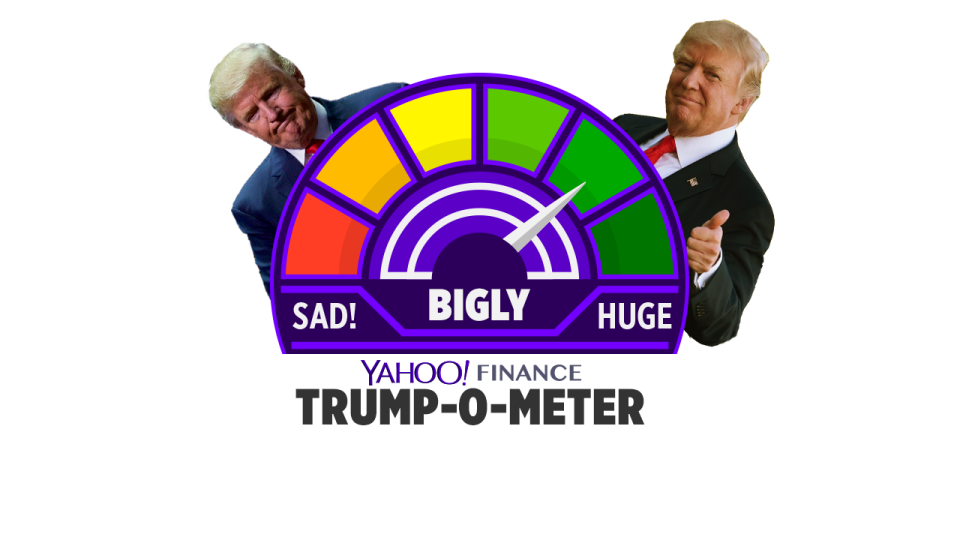This week in Trumponomics: The job boom continues
You can quibble with the details, but there’s no denying the job market remains strong, with President Trump as a main beneficiary.
Employers added 263,000 jobs in April, a sizzling pace of job growth that exceeded what economists expected. The unemployment rate dropped to 3.6%, the lowest level since 1969. Most sectors of the economy added jobs, with the only notable weaknesses in retail and utilities.
Employers have added 200,000 jobs per month under Trump, which is great but not unprecedented. During President Obama’s second term, job growth averaged 217,000 per month. But it’s easier to add jobs in the aftermath of a recession, as under Obama, than in the late innings of an expansion, which we’re probably in now. Job growth under Trump has been impressive.
If Trump would take to the sidelines and let the numbers speak for themselves, he might earn the Trump-o-meter’s highest mark—HUGE—this week. But that’s not Trump’s style. Both before and after the strong jobs report, he insisted that the Federal Reserve should lower interest rates. This is bald political manipulation and bad economics, besides. For these reasons, this week’s Trump-o-meter can only muster a BIGLY, the second-highest reading.

Trump should lay off the Fed, but he probably won’t. The Fed began a measure pace of interest rate hikes in late 2015, when Obama still had 3 months in office. From then through December 2018, the Fed raised short-term rates from almost 0 to around 2.5%. The Fed may have gone a bit further than necessary during that time, but nearly all economists think the Fed’s general policy has been correct. When the economy is healthy, the Fed should gradually raise rates, to hold off inflation and provide some room for cutting when the next recession hits.
Trump doesn’t care about that. What he seems to want is an economic insurance policy as he heads for reelection, which is why he’s imploring the Fed to cut rates. Lower rates stimulate spending and investment, but they can also open the door to inflation and fuel speculative bubbles that make inevitable recessions deeper and longer than they need to be. Nixon prompted Fed chairman Arthur Burns to cut interest rates ahead of Nixon’s reelection campaign in 1972, and Burns did. Double-digit inflation arrived a few years later, fueled in large measure by inappropriately low rates.
There’s no economic rationale for cutting rates when the job market is as strong as it seems to be now. Yet other Trumpers are now echoing Trump’s demand for lower rates, including Vice President Mike Pence and White House economist Larry Kudlow, who surely knows this is folly. The Fed, for its part, is standing its ground, neither cutting nor hiking for the time being. Investors expect no action for the next few months. Except, of course, around Trump’s mouth.
Confidential tip line: rickjnewman@yahoo.com. Encrypted communication available. Click here to get Rick’s stories by email.
Read more:
Why Medicare for all is doomed
The stock market liked these presidents better than Trump
Joe Biden’s economic views need a major update
The Mueller report thoroughly impugns Trump
Winter is coming for big business
3 problems with Elizabeth Warren’s wealth tax
Rick Newman is the author of four books, including “Rebounders: How Winners Pivot from Setback to Success.” Follow him on Twitter: @rickjnewman

